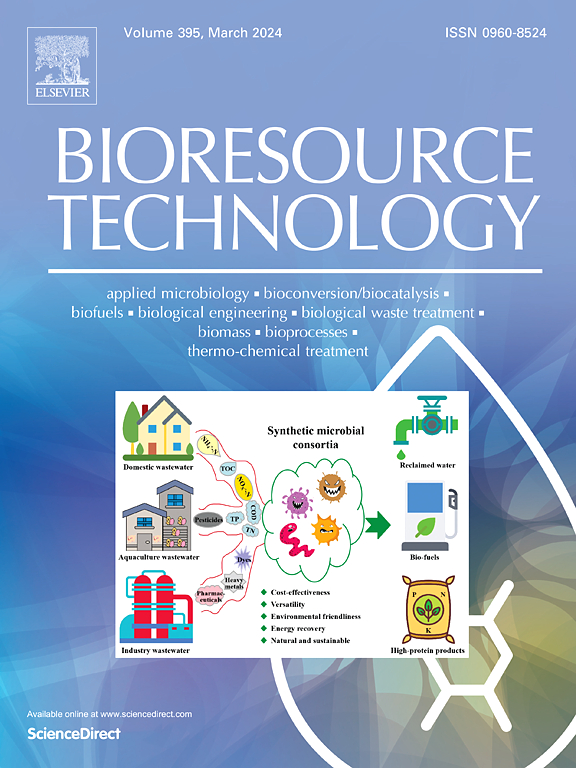接受污水处理厂污水的湿地中 SDBS 与水草-附生生物膜之间的相互作用:营养物质的去除和附生微生物的聚集。
IF 9.7
1区 环境科学与生态学
Q1 AGRICULTURAL ENGINEERING
引用次数: 0
摘要
污水处理厂(STPs)污水中的十二烷基苯磺酸钠(SDBS)在湿地中的归宿及其对营养物质和水下大型植物的影响尚不清楚。本研究进行了一项为期 24 天的实验,以调查接受 0.5、2 和 5 mg L-1 SDBS 污水的湿地中营养物质和水草附生生物膜的变化。上覆水中 SDBS 的减少遵循伪一阶动力学方程,SDBS 的去除率超过 80%。2 mg L-1 和 5 mg L-1 的 SDBS 降低了营养物质的去除效率,诱发了氧化应激反应并破坏了 H. verticillata 的细胞。SDBS 改变了细菌和真核生物群落的多样性。0.5 mg L-1 的 SDBS 可促进微生物的碳固定和甲烷氧化。网络分析显示,0.5 mg L-1 SDBS 会降低附生生态系统的稳定性。曼特尔检验表明,SDBS、温度和总氮对附生微生物群落有显著影响。本文章由计算机程序翻译,如有差异,请以英文原文为准。

Interactions between SDBS and Hydrilla verticillata − epiphytic biofilm in wetland receiving STPs effluents: Nutrients removal and epiphytic microbial assembly
The fate and effects of sodium dodecyl benzene sulfonate (SDBS) in sewage treatment plants effluents on nutrients and submerged macrophytes are far from clear in wetlands. This study conducted a 24-day experiment to investigate changes in nutrients and epiphytic biofilm of Hydrilla verticillata in wetlands receiving effluents with 0.5, 2 and 5 mg L−1 SDBS. The decrease of SDBS in overlying water followed pseudo-first-order kinetic equation, with over 80 % of SDBS removal achieved. 2 and 5 mg L−1 SDBS decreased nutrient removal efficiency, induced oxidative stress response and damaged cells of H. verticillata. SDBS altered bacterial and eukaryotic community diversity. 0.5 mg L−1 SDBS can promote carbon fixation and methane oxidation of microorganisms. Network analysis revealed that 0.5 mg L−1 SDBS decreased the stability of epiphytic ecosystems. Mantel tests indicated significant influences of SDBS, temperature, and total nitrogen on epiphytic microbial communities.
求助全文
通过发布文献求助,成功后即可免费获取论文全文。
去求助
来源期刊

Bioresource Technology
工程技术-能源与燃料
CiteScore
20.80
自引率
19.30%
发文量
2013
审稿时长
12 days
期刊介绍:
Bioresource Technology publishes original articles, review articles, case studies, and short communications covering the fundamentals, applications, and management of bioresource technology. The journal seeks to advance and disseminate knowledge across various areas related to biomass, biological waste treatment, bioenergy, biotransformations, bioresource systems analysis, and associated conversion or production technologies.
Topics include:
• Biofuels: liquid and gaseous biofuels production, modeling and economics
• Bioprocesses and bioproducts: biocatalysis and fermentations
• Biomass and feedstocks utilization: bioconversion of agro-industrial residues
• Environmental protection: biological waste treatment
• Thermochemical conversion of biomass: combustion, pyrolysis, gasification, catalysis.
 求助内容:
求助内容: 应助结果提醒方式:
应助结果提醒方式:


